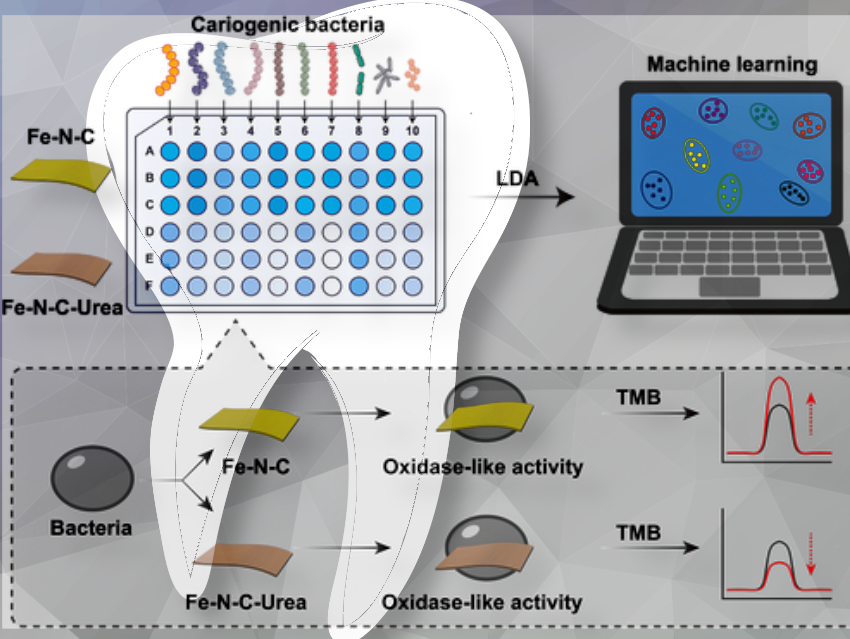Dental caries is caused by tooth-adherent cariogenic bacteria that produce acids from dietary carbohydrates, promoting further bacterial growth. Key cariogenic bacteria include Streptococcus mutans, Lactobacillus acidophilus, and others. Identifying multiple cariogenic bacteria in saliva samples is important for preventing and treating oral diseases.
Daixin Ye, Xi Chen, Juan Zhang, and colleagues, Shanghai University, Shanghai, China, have developed a colorimetric sensor array, using single-atom nanozymes (SANs) and machine learning, to identify and distinguish cariogenic bacteria. This array takes advantage of the different influences of cariogenic bacteria on the catalytic activity of SANs to generate unique colorimetric “fingerprints”.
The sensor array uses Fe─N─C SANs whose oxidase-like activity is increased by the presence of cariogenic bacteria, which accelerate electron transfer. Conversely, Fe─N─C─Urea SANs show reduced activity when interacting with the same bacteria. Therefore, the absorbance values of 3,3′,5,5′-tetramethylbenzidine (TMB) catalyzed by SANs bound with different cariogenic bacteria are different. Machine learning techniques, specifically linear discriminant analysis (LDA) and hierarchical cluster analysis (HCA), are used to analyze the colorimetric responses and effectively distinguish between different genera and species of bacteria. The sensor array excels in accurately identifying ten cariogenic bacteria, even at concentrations as low as 102 CFU mL−1 as well as in complex samples like artificial saliva.
According to the researchers, this development is significant for oral health as it provides a rapid, simple, and precise method for identifying cariogenic bacteria, overcoming the limitations of traditional detection methods.
- The Identification of Oral Cariogenic Bacteria through Colorimetric Sensor Array Based on Single-Atom Nanozymes,
Yuan Zhang, Muhammad Arif Khan, Zhangli Yu, Wenjie Yang, Hongbin Zhao, Daixin Ye, Xi Chen, Juan Zhang,
Small 2024.
https://doi.org/10.1002/smll.202403878
Also of Interest

The way our teeth are made, dental care, cavities, fillings and dentures all have something to do with chemistry—a compilation of articles and quizzes on chemistry related to teeth



